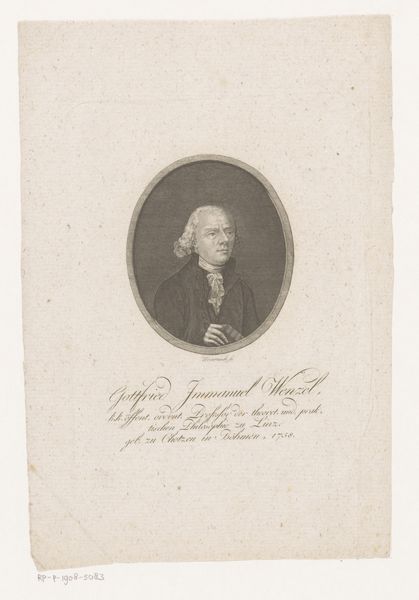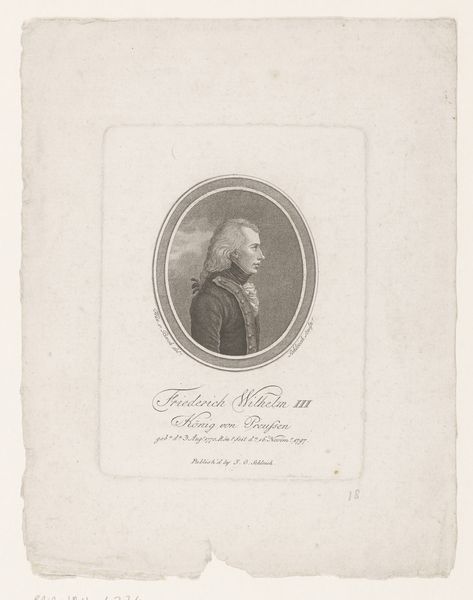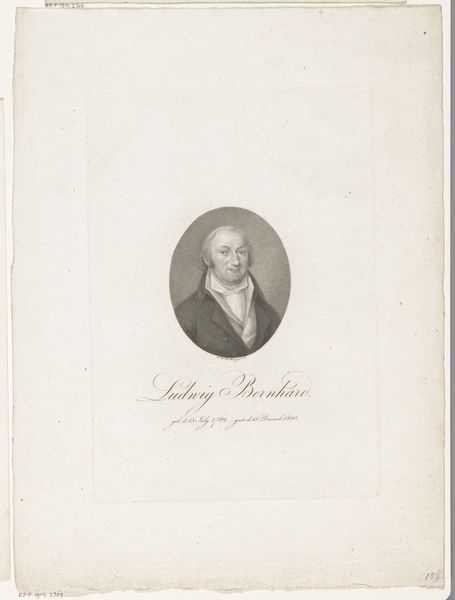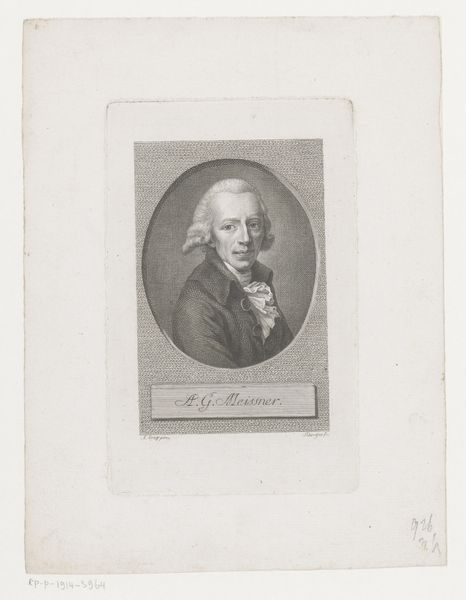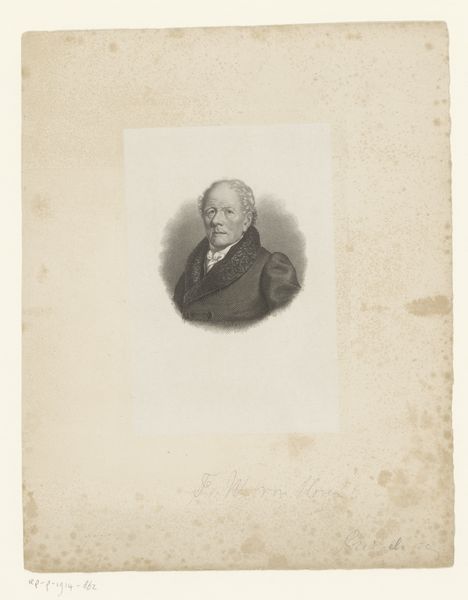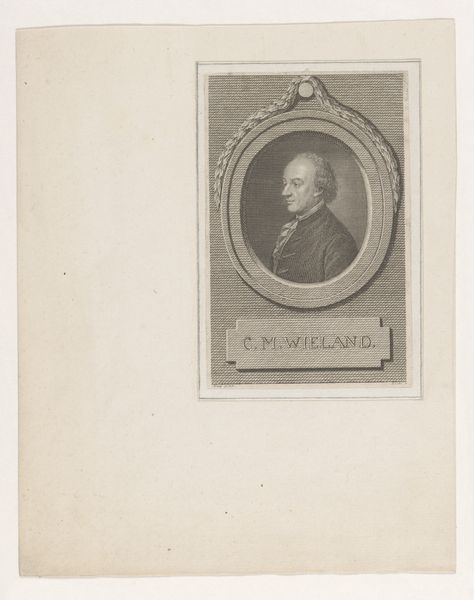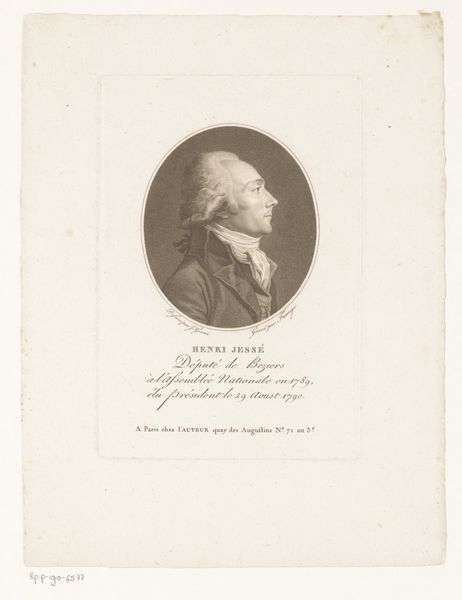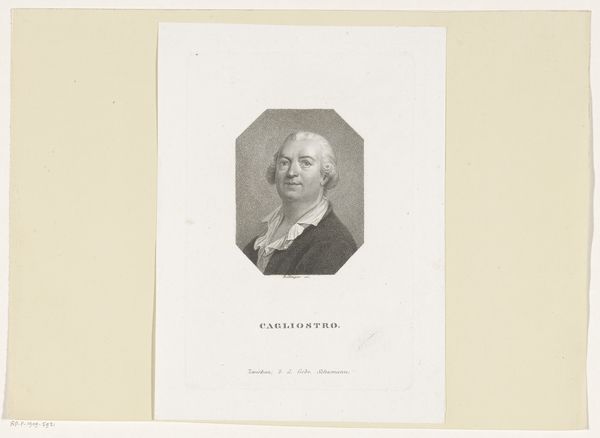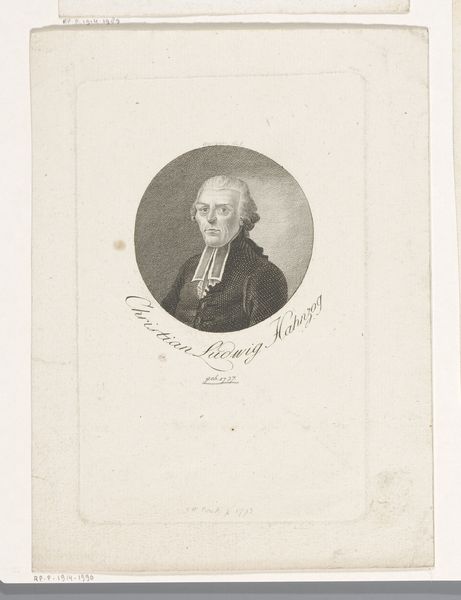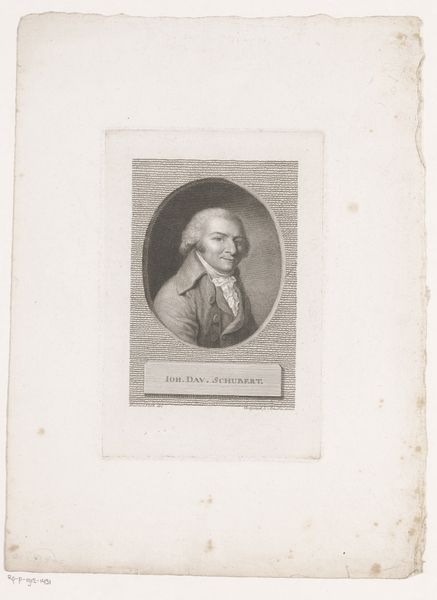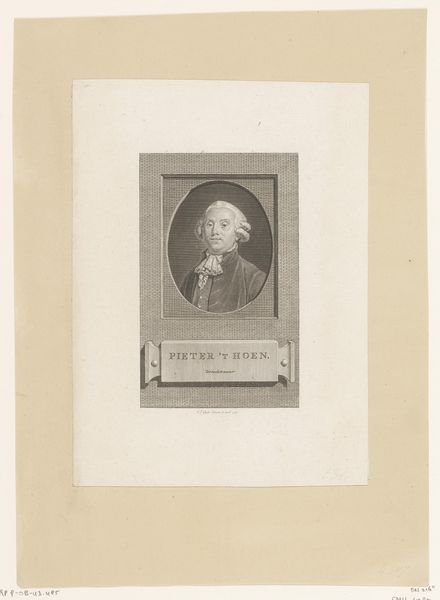
Dimensions: height 198 mm, width 125 mm
Copyright: Rijks Museum: Open Domain
Curator: Here we have a portrait from around 1800, titled *Portret van Georg Heinrich Sieveking*. The artist, Leo Wolf, used dry media like pencil and engraving to capture the likeness of this gentleman. Editor: The first thing that strikes me is the almost severe formality of the presentation, framed in that oval. It emphasizes Sieveking's status, but also feels a bit distant, clinical even. It also highlights the texture of the paper which gives the portrait an aged feel, a sense of having passed through time. Curator: That distance, that "clinical" feel you perceive, speaks volumes about the Neoclassical ideals that were ascendant at the time. There’s a deliberate effort to present Sieveking as a figure of reason, almost like a Roman senator—notice the plainness, and lack of adornment. The engraving allows the creation of images, a means to disseminate specific imagery. Editor: Precisely. Look at the textures achieved through engraving; those delicate lines building form, light, and shadow. The materiality underscores its role as a mass-produced object intended for circulation amongst particular societal elites. This print operates less as an artwork of emotional expression, and more as a tool. What kind of impression do you think the engraver wanted to give of this man? Curator: Indeed, the image's goal here feels intertwined with the rise of the bourgeoisie, projecting power, intellect, respectability... All communicated through a very controlled visual language. Think of it almost as a visual brand, carefully designed and broadly distributed. Editor: And a visual brand achieved through labor, a deliberate mark-making performed over an expanse of time. Those cross-hatched lines on his coat? Countless individual decisions, physical work imbuing a powerful man with a tangible, manufactured persona. The final material isn’t necessarily valuable, but the engraving gives that image prestige. Curator: Thinking about the material conditions alongside the symbolic image that it promotes certainly complicates any single view. This forces one to reflect not only on representation and artistry but also on social and economic relationships that sustain such imagery. Editor: It all comes back to that connection—how the tools and systems that fashion a piece contribute to its enduring resonance. Curator: I agree. This work shows a really interesting collision of those issues in a single image, so deliberately crafted and considered.
Comments
No comments
Be the first to comment and join the conversation on the ultimate creative platform.
